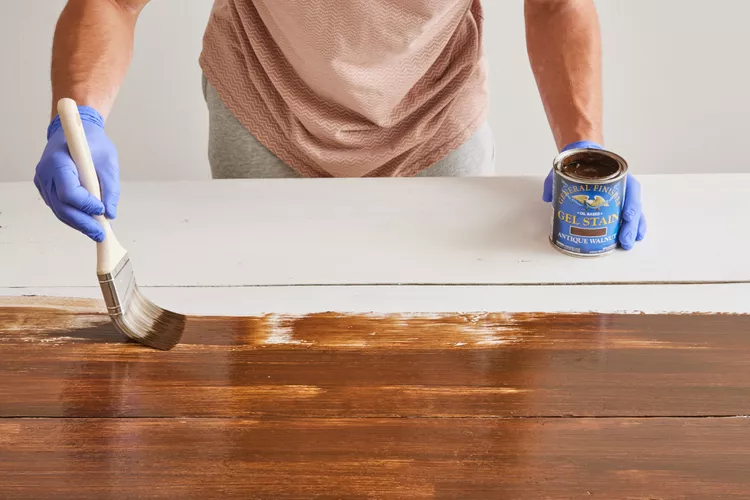When it comes to enhancing the beauty of your home, nothing quite compares to the transformative power of a fresh coat of paint or stain. Among the various options available, latex stains have gained popularity among homeowners and professionals alike. But the question remains: do latex stains work good? This comprehensive guide will delve into the benefits and drawbacks of latex stains, helping you make an informed decision for your next project.
Understanding Latex Stains
Latex stains are water-based products primarily made from acrylic or vinyl resins. They are commonly used to add color and protection to surfaces such as wood, concrete, and masonry. Unlike traditional oil-based stains, latex stains offer a range of advantages that can make them an appealing choice for many applications.
The Appeal of Latex Stains
Ease of Use
- Application: Latex stains are easy to apply with brushes, rollers, or sprayers. They have a smooth consistency that allows for even application, reducing the chances of streaks or blotches.
- Quick Drying Time: One of the most significant advantages of latex stains is their fast drying time. Most latex stains dry to the touch within an hour, allowing you to complete projects more efficiently.
Low Odor and Low VOCs
- Healthier Environment: Latex stains typically have a lower odor compared to oil-based products, making them more pleasant to work with indoors. Additionally, many latex stains are low in volatile organic compounds (VOCs), contributing to better indoor air quality.
Easy Cleanup
- Water-Based: Because they are water-based, cleaning up after using latex stains is a breeze. Brushes and tools can be washed with soap and water, making the cleanup process quick and hassle-free.
Color Retention and Fade Resistance
- Durability: Latex stains often retain their color better over time and resist fading from UV exposure, making them suitable for outdoor applications.
Flexibility and Breathability
- Surface Compatibility: Latex stains are more flexible than oil-based stains, allowing them to expand and contract with the surface. This quality makes them ideal for use on wood, which naturally moves with changes in temperature and humidity. Additionally, latex stains are breathable, preventing moisture from being trapped underneath the finish.

The Drawbacks of Latex Stains
While there are many benefits to using latex stains, it’s essential to consider their potential drawbacks:
Lower Penetration
- Surface Absorption: Latex stains may not penetrate as deeply into wood as oil-based stains. This can be a concern for exterior applications where maximum protection against moisture and weathering is desired.
Sheen and Finish Options
- Limited Choices: While latex stains are available in various sheens, they may not offer the same rich, glossy finishes as oil-based stains. For projects that require a high-gloss finish, latex stains might not be the best option.
Application Conditions
- Weather Sensitivity: Latex stains can be more sensitive to weather conditions during application. High humidity or low temperatures can affect drying times and the overall finish. It’s important to follow the manufacturer’s recommendations for optimal application conditions.
Potential for Peeling or Chipping
- Surface Preparation: If the surface is not properly prepared, latex stains may be prone to peeling or chipping over time. Proper cleaning, sanding, and priming are essential steps to ensure a lasting finish.
When to Use Latex Stains
Understanding when to use latex stains can help you make the most of their benefits:
Interior Applications
- Latex stains are excellent for interior wood surfaces such as furniture, cabinetry, and trim. Their low odor and quick drying times make them ideal for indoor use.
Exterior Applications
- While latex stains can be used outdoors, it’s crucial to choose a high-quality product specifically designed for exterior use. Look for stains that offer excellent UV protection and moisture resistance.
Concrete and Masonry
- Latex stains are suitable for concrete surfaces, offering vibrant color options and good durability. They can be used on driveways, patios, and interior concrete floors to enhance aesthetics.
Tips for Successful Application
To ensure the best results when using latex stains, consider the following tips:
Surface Preparation
- Properly prepare the surface by cleaning, sanding, and priming as needed. This step is vital for ensuring good adhesion and a lasting finish.
Test on a Small Area
- Before committing to a full application, test the stain on a small, inconspicuous area. This allows you to evaluate the color and finish.
Follow Manufacturer Instructions
- Always follow the application and drying instructions provided by the manufacturer. This ensures optimal results and helps avoid common pitfalls.
Apply Multiple Coats if Necessary
- For deeper color and better coverage, consider applying multiple coats of stain. Allow adequate drying time between coats.
Choose the Right Tools
- Use high-quality brushes, rollers, or sprayers to apply the stain. The right tools can significantly impact the finish quality.
Conclusion
So, do latex stains work good? The answer is a resounding yes, particularly for specific applications. With their ease of use, low odor, quick drying times, and versatility, latex stains offer an excellent solution for many projects. However, it’s essential to consider the potential drawbacks, such as lower penetration and sensitivity to application conditions.
By understanding the benefits and limitations of latex stains, you can make an informed decision that best suits your project needs. Whether you’re refreshing your interior space, enhancing outdoor surfaces, or giving new life to concrete, latex stains can be a valuable addition to your toolkit, helping you achieve stunning results while maintaining a safe and pleasant working environment.
FAQs About Do Latex Stains Work Good
1. What are latex stains?
Latex stains are water-based products made from acrylic or vinyl resins used to add color and protection to surfaces like wood, concrete, and masonry.
2. Do latex stains work good for outdoor applications?
Yes, latex stains can work well outdoors, especially if they are specifically formulated for exterior use, offering UV protection and moisture resistance.
3. How do latex stains differ from oil-based stains?
Latex stains are water-based, have lower odors, and dry quickly compared to oil-based stains, which tend to have a stronger smell and longer drying times.
4. Can I use latex stains indoors?
Absolutely! Latex stains are excellent for indoor use due to their low odor and quick drying properties, making them ideal for furniture, cabinetry, and trim.
5. What surfaces can I apply latex stains on?
Latex stains can be applied to various surfaces, including wood, concrete, and masonry. Proper surface preparation is essential for achieving the best results.
6. Are latex stains easy to clean up?
Yes, latex stains are easy to clean up with soap and water, making them convenient for both application and cleanup.
7. Do latex stains require primer?
In many cases, a primer is recommended, especially for bare or porous surfaces, to ensure good adhesion and a lasting finish.







